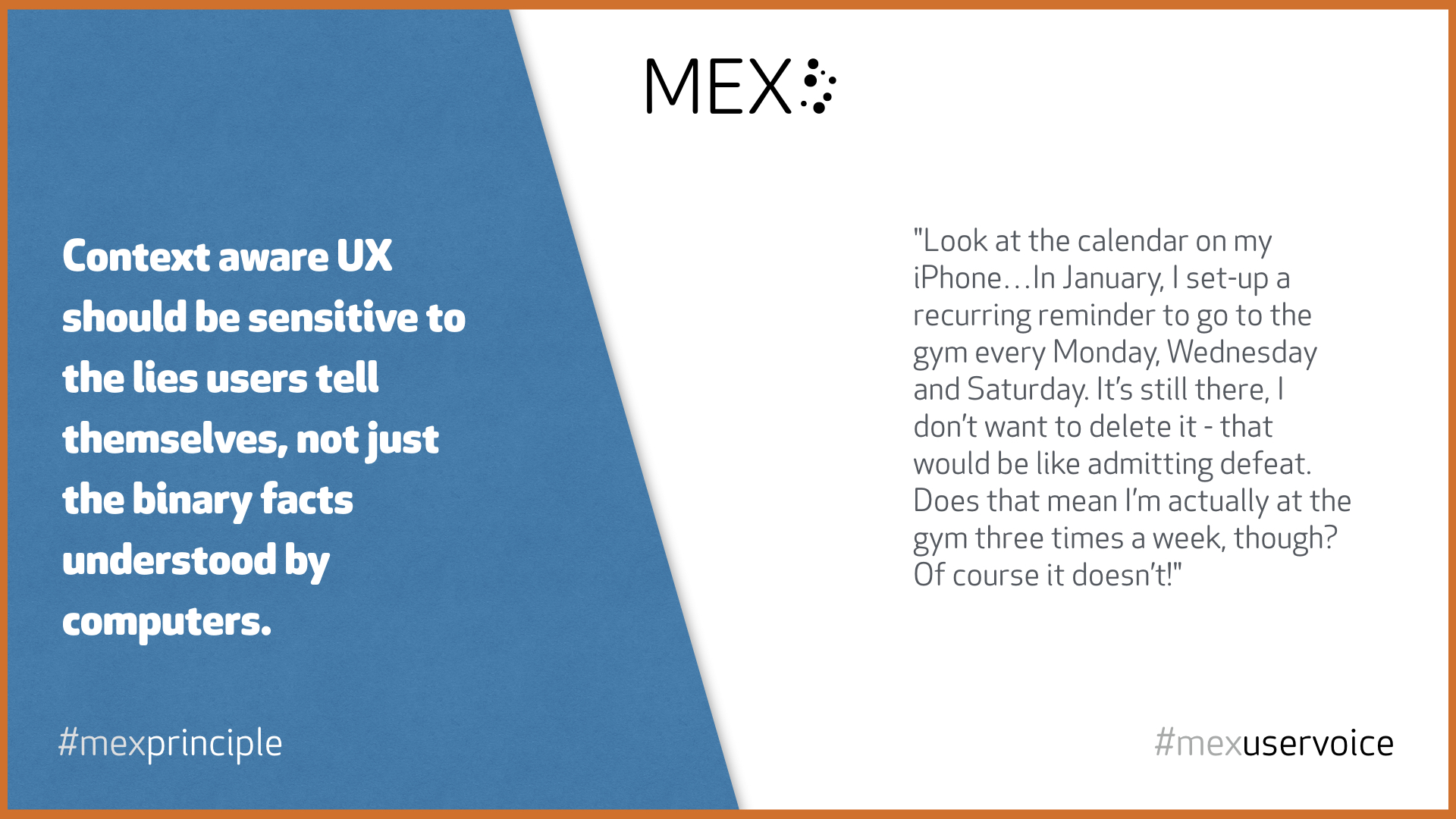Principles for context aware UX design
At MEX/11, Louisa Heinrich shared a series of techniques for creating contextually responsive digital experiences. One of the guiding principles was for designers to acknowledge the fictional narratives users create for themselves.
“Look at the calendar on my iPhone…In January, I set-up a recurring reminder to go to the gym every Monday, Wednesday and Saturday. It’s still there, I don’t want to delete it – that would be like admitting defeat. Does that mean I’m actually at the gym three times a week, though? Of course it doesn’t!” — #mexuservoice
These stories we tell ourselves about who we are, our relationship with others and the world around us, are often more important in determining our emotional response to a digital product or service than the binary facts understood by computers.
In practice, this can mean making provision for a subjective preference to override a seemingly more logical, data-driven choice in the interests of building trust and understanding with the users.
Louisa’s talk was part of MEX Pathway #14, an ongoing exploration of principles for context aware experience design, which has gone on to inform more recent thinking about artificial intelligence.
For further views on this theme, try:
- Louisa Heinrich’s MEX/11 talk and episode 5 of the MEX podcast, where she talks about robot UX.
- Principles for artificial intelligence in UX
- Episode 10 of the MEX podcast, where we talk to Nathan Benaich, partner at Playfair Capital, a VC specialising in AI investments
- How artificial intelligence nuances experience design, part of the MEX Friday inspirations series
- Episode 2 of the MEX podcast, talking to Ed Rex, CEO of Jukedeck, an artificial intelligence engine for music
- MEX Pathway #14, cataloguing ongoing work into the principles for context aware design
The principle, part of an emerging series in the MEX journal, is summarised below in a tweetable, shareable graphic. Please share and thank you for citing appropriately.



+ There are no comments
Add yours